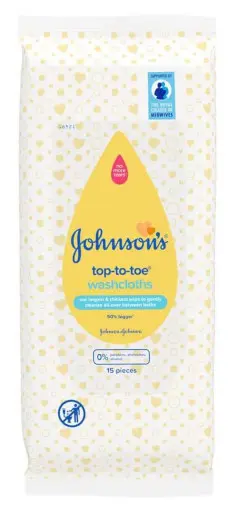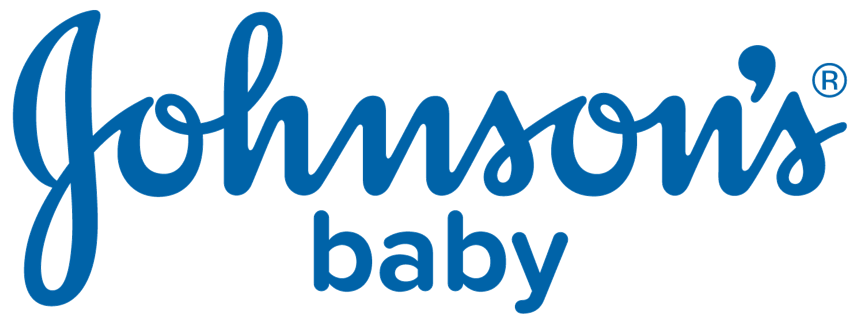Toddler Bathtime

Toddler Bathtime Guide
Bathing is an important part of a toddler’s personal development and helps to encourage social, cognitive, and behavioural progression. Having a consistent bathtime routine – including the time of day, what you use to wash your child, and making it fun – can help them feel safe and engaged.
As your baby grows into a toddler, bathtime can cause a number of challenges – from tantrums to fears. But don’t worry, we’re here to give you the tips and advice you need to keep your toddler feeling safe and having fun when bathing.
In this article, we’ll cover:
How often should you bath a toddler?
Life with a toddler can get messy. Depending on how mobile they are, they may be moving, exploring, and playing outside much more than when they were a baby. Therefore, they will need more frequent baths. But, just like with baby baths, you don't need to bathe your toddler every day. Generally, you should only need to bath them two to three times a week – unless they’ve had a particularly messy day.
If bathtime is something your little one really enjoys, then having a bath every day isn’t a problem. Just make sure excessive bathing doesn’t dry out their skin by using a gentle bubble bath and applying baby oil or lotion when they get out of the water.
How to bathe your toddler
There might be some days where your toddler hates bathtime and getting them clean can feel like an uphill struggle. Thankfully, we have plenty of tips and tricks to help those battles seem few and far between, so you both can look forward to some good clean fun.
Set up a scheduled bath time
Routine is key. Stick to a time to bath your toddler so it becomes part of their regular schedule. This can help them feel safe and secure, meaning they’re more likely to enjoy their baths. You can also tailor products to whether they prefer bath time in the morning or evening – for example, specially formulated products like JOHNSON‘S® Bedtime Bath can help encourage better sleep.
Get the water temp and level right
Water temp – toddler bath temperature should be warm, not hot. Check the temperature using your wrist or elbow and swill the water well to avoid hot patches.
Water level – you should bathe your child in the smallest amount of water possible. Filling the water to no higher than your little one’s belly button when they’re sitting down should be plenty.
Make bath time short and sweet
Ideally, you should keep your toddler’s baths to no more than 15 minutes long, so you don’t dry out their skin. Don’t forget to also apply a gentle lotion, like JOHNSON‘S® Baby Lotion, after each bath.
Safety and preparation are key
The surface of your bathtub may be slippery – consider using a rubber non-slip mat to avoid your toddler sliding around.
Position your little one with their back to the taps – this is to avoid their temptation to fiddle with them. Consider a bath seat for toddlers if your child is pre-school age.
Have a clean towel and change of clothes nearby – this means you won’t have to leave your little one unattended in the bathroom.
Clean them from the top down
Work from the top of your toddler’s body downwards. Start with their hair, then use a washcloth to clean their face before moving to their neck and continuing down their body.
Keep them engaged
You can talk your toddler through each step of your bathtime routine as you go, so they start to learn how to do it themselves. Two- to six-year-olds wash less than 70% of their bodies effectively, so it’s a good idea to teach them how to wash themselves early.
How to keep bathtime fun for your toddler
While bathing helps keep your little one clean after a day of exploration and curiosity, it’s also a great time to splash around and have fun. Play is also a vital part of their development process.
It’s known that children learn through their senses and bathing is a hugely sensory experience, evoking the sensations of touch, smell, and sound. This makes it essential for healthy social, emotional, and behavioural development.
Playing in water has plenty of benefits for you toddler. By splashing and pouring, they develop their motor and coordination skills. Plus, it could help increase your child’s attention span and ability to concentrate by holding their interest for long periods of time.
Some fun things to do in the bath with your toddler can include:
Bath games for toddlers – playing games like Simon says or singing songs such as ‘head, shoulders, knees, and toes’ can help increase their body awareness.
Use plastic bottles for pouring and water play – you can use plastic tubing, sponges, a colander, straws, funnels, spoons, and anything else that's unbreakable but can be used to pour or squeeze out water. This can help strengthen the muscles in your little one’s hands and improve their coordination.
Role-play bath time – encourage your toddler to play the part of ‘mummy’ or ‘daddy’ and ask them to help wash your hands or rinse your hair.
Splash the water with your hands – it can be messy, but it’s a great sensory experience for your little one.
Social-emotional development through toddler bathtime
As toddlers play during bathtime, they are learning and developing both their mental and physical skills, which are vital to growth and future independence.
Social-emotional development
What you can do
Ask your toddler if they would like to try washing themselves. Delight in your toddler’s discoveries and accomplishments. Let them know what a good job they are doing, for example, cleaning and taking care of their ducky.
Help them cope with transitions by giving them notice before bathtime ends and letting them take a favourite toy with them.
What your child is learning
That they can take care of themselves and that they are a good helper.
That they are important and capable.
That their feelings are important and that you will help them manage difficult situations.
Language and thinking skills
What you can do
Explore bath books together. Invite them to point to familiar objects. Show them the connection between what they see in the book and things in the “real” world.
Talk with your toddler about what you are doing together during bathtime. Ask them questions: Is the rubber duck thirsty? Does ducky need to get washed?
Help your toddler become a good problem-solver; for example, by guiding them in how to soap up the sponge or find the page they are looking for in their book.
What your child is learning
New words and to love books and reading, anytime, anywhere.
That they are a good communicator. That they can develop their own ideas.
That they can tackle the challenges they face.
Physical development
What you can do
Offer your toddler lots of different safe objects to explore in the bath.
Notice the way they use their body to make things happen, like popping the bath bubbles.
What your child is learning
How to use their fingers and hands to make things work, such as grasping the jug firmly and dunking it in the water before pouring.
That they have a good, strong, body that can do so many great things. This builds positive self-esteem.
Safety during toddler bathtime
Whilst bathtime can be fun and relaxing, safety should always come first. Here are some of our top tips to help your toddler safely enjoy their bathtime:
Remember…
Stay with your child at all times while they’re in the bath.
Always keep them within arms’ length so it’s easy to catch them if they slip or fall.
Give them your full attention, leaving any distractions (like your phone) outside the bathroom.
Avoid leaving your toddler with an older sibling while they’re in a bath. Only ever leave them with another adult.
Use the smallest amount of water possible to bathe your child.
Take your little one with you if you need to leave the room and don’t have another adult to help you.
If you choose to use a bath seat or aid for toddlers…
Aides like bath seats can be a useful tool in helping busy parents at bathtime, but they’re NOT safety devices. You should never leave your child unattended in a bath seat.
Always keep your toddler within arms’ reach at all times in case the seat tips over.
Make sure it’s firmly stuck to the bottom of the bath.
Why is my toddler scared of the bath all of a sudden?
Baths should be a fun bonding experience for you and your little one, but it’s not uncommon for them to suddenly develop a phobia of either the bath or water. Whether it’s a fear of the draining noise or getting water on their face, we have lots of advice on how to ease those toddler bathtime tantrums:
Reassure them
It’s important to recognise any fears your little one has about bathtime as legitimate and treat them attentively. Where possible, talk to your toddler about their worries. Make sure you’re constantly reassuring them and letting them know that any anxieties they have are valid.
Give them control
Let them take control by allowing them to scoop and pour water over their head using a jug or spraying themselves with the shower head.
Give them a choice over their own shampoos and bathtime products – including their flannel and wash mitt. They might be more willing to use products featuring characters they recognise or patterns and colours they like.
Protect their face from products
Remember to use a shower cap or visor to keep water and shampoo out of your child’s face while you wash their hair. This could help remove some of the bathtime fear if your toddler finds it unpleasant to have products near their face.
Make bath time fun
Kids bath toys – such as fun washcloths, colourful rubber ducks and boats, water guns, and even waterproof books –can help to put your toddler at ease.
Try talking or singing together as they clean themselves. The calming, familiar sound of your voice might help relax your little one during bath time.
Give lots of praise
Reassure your child with verbal praise throughout bathtime to let them know they’re doing well. You could also try using a sticker chart to help them overcome any bathtime worries, and to encourage them to learn how to wash themselves.
Don’t pull the plug when they’re in the bath
Some children are afraid of the noise the water makes as it drains or are scared of being sucked down the plug hole. If this is the case, try taking them out of the bath (and maybe out of the bathroom) before you pull the plug.
Ease them into bath time
Slowly introduce your toddler to bathtime by following these steps:
Share a bath or shower together.
Let your child sit or play in the bath without water, then gradually add the water.
Put your child in their bathing suit for their bath.
Sit your little one in their old baby bath in the big tub (if they still fit).
Toddler bathtime products
Using the same products at each bathtime can go a long way to helping establish a routine for your little one. It gives them a chance to familiarise themselves with the products you’re using and establish a sense of comfort.
This can be especially useful if you plan to use a bath as part of your bedtime routine. Consider using products with calming scents, such as JOHNSON‘S® Bedtime Bath, to help encourage relaxation and get them ready for a good night’s sleep.
If you’re keen to make your toddler’s baths more fun and engaging – and want to encourage your child to bathe without a tantrum – a product that’s gentle on their skin but still creates lots of fun bubbles, like JOHNSON‘S® Kids Bubble Bath & Wash, can be a great idea.
It’s also recommended that you use gentle products, like our Baby Shampoo, that won’t hurt their delicate eyes if it does splash their face while washing their hair.
Toddler Bath FAQs
When should a child be able to bath themselves?
Children between two and six-years-old wash less than 70% of their bodies effectively, so it’s a good idea to start encouraging them to wash themselves from the age of about two. This can start with small steps, such as letting them take over a part of the bathing process. For example, they could start watching you add soap to a washcloth and then take the cloth from you to wash themselves.
At the beginning, they may need you to guide their hands to show them what to do. Gradually, you can build on this so that they’re able to wash themselves completely independently. Just remember that they’ll need plenty of support and supervision until they’re old enough to bathe alone.
What age can a child bath alone?
You should always supervise children under five years old in the bath. They should only be left under the watch of another adult, and not an older sibling, as they may not be able to see into the tub or respond effectively in an emergency.
Remember to trust your own judgement. If you feel your child is not ready to be left unsupervised at five years old, you can stay with them – there’s no hard and fast rule here.
How long after eating can a toddler take a bath?
Ideally, you should bath your toddler at a time where they’re alert, awake, and content. That means it’s often best not to bath them straight after a meal when they may feel sleepy. Make sure you give them enough time for their tummy to settle after eating so there’s less chance of them being sick while in the bath.
You Might Also Like...

JOHNSON’S® TOP-TO-TOE® Baby Washcloths - quick and easy bathtime anytime, anywhere.
Gently clean without needing to rinse with water. They are larger than a traditional baby wipe, and are made from a soft thick cloth. The NO MORE TEARS® formula is as mild to the eyes as pure water, which means the wipes are suitable to use even on baby's face.They provide a quick and easy bath anytime, anywhere.
JOHNSON'S®Pioneering Safety and Science in Baby Care
We are committed to working with Parents, Healthcare Professionals and Scientists to ensure our baby products continue to deliver high standards of safety and care.

